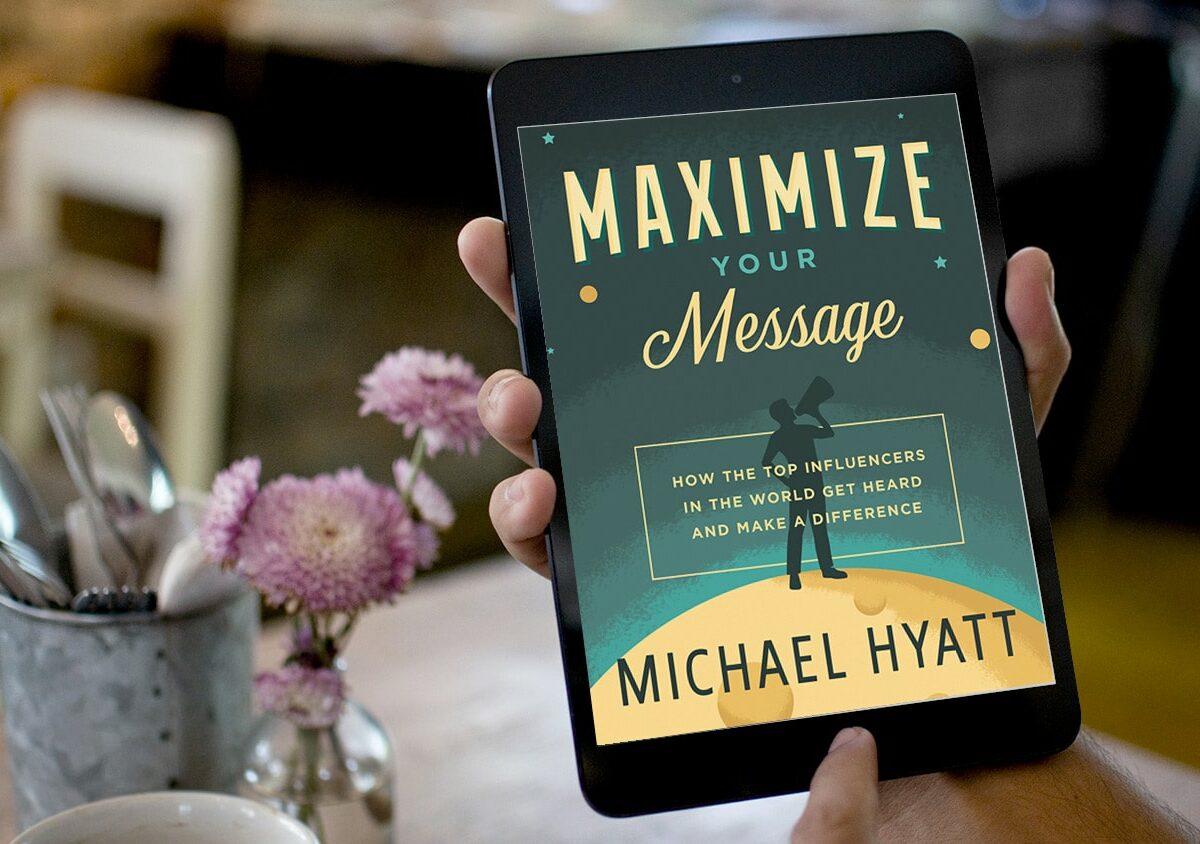Blogging is an important part of my life. It the primary way I have built and communicate with my tribe. However, it is not the only thing I do. I’ll bet it’s not for you, either.

If you are like most bloggers, you are trying to squeeze it in between your job, your family, and a thousand other activities. It can be really tough to be consistent.
After writing more than 1,000 posts, I have gotten better and faster with practice. Now, on average, it takes me 60–70 minutes to write and format a single post. I thought I would share eleven of the tricks I use to write more efficiently.
- Start the night before. I try to determine what I am going to write about tomorrow before I go to bed. This allows my mind to begin engaging with the topic in advance. It’s like putting a roast in a crockpot and letting it simmer overnight.
- Use downtime to think. I run or workout for 60 minutes almost every morning. During this time, I listen to an audio book for 30 minutes. This often provides raw material for future posts. Then I turn it off and just think. I primarily focus on what I am going to blog about that day. I usually create my main premise and outline in my head.
- Go offline. When it is time to write, I go offline. Sort of. I can’t be completely offline, because I need to be able to use the web for research. However, I don’t need to be checking email, Twitter, or Facebook. Enter AntiSocial. This little program enables me to turn off email and all my social networks. I can’t get back to them without rebooting my computer. If you are a PC user, Cold Turkey is similar.
- Turn on some music. Years ago, I discovered that certain kinds of music put me in my “zone.” I have a playlist of music in iTunes that I call “Background Music for Writing.” It consists mostly of soundtracks like The Bucket List, Seabiscuit, and The Horse Whisperer. I also occasionally listen to Lifescapes Music.
- Set a timer. Writing is not difficult for me. The challenge is getting started. I can find an endless array of distractions. Starting a timer for 70 minutes creates a sense of urgency. I am very competitive with myself, and I find myself engaging immediately and racing the clock to finish. I simply use the timer on my iPhone.
- Use a template. This helps, too. I use a formula based on the SCORRE method taught by Ken Davis at the Dynamic Communicators Workshop. (If you haven’t attended DCW, put this on your bucket list. It’s one of the best things I have ever done professionally.) I start with an Evernote template and then actually do the writing in ByWord, a stripped-down word processor.
- Create an outline. In case you haven’t noticed, I like lists. This makes my posts highly scannable, which also makes them easier for my readers to digest. It also makes it very easy for me to write. I know the overview before I begin. It then almost becomes an exercise in fill-in-the-blank.
- Write without editing. Don’t try to write and edit. If you do, you will drive yourself crazy. Worse, you won’t make much progress. Writing is primarily a right-brain function. Editing is a left-brain function. Switching back and forth between these two hemispheres slows you down. You don’t really get into the grove like you should. Instead, I just write continuously without stopping.
- Now edit and format. Once I have a first draft, I begin the editing process. I read back through my post a few times, cleaning up the spelling, grammar, and syntax. I also try to shorten everything I can. I want to use simple words, short sentences, and short paragraphs. This is one of the most important things you can do to make your posts read faster.
- Add graphics, links, and metadata. Once I am happy with my post, I copy and paste everything from ByWord to MarsEdit. (This is my offline blogging software.) There I add graphics, usually a single photo from iStockPhoto.com. In addition, I add internal and external links and the all important metadata (e.g., category, post description, key words, etc.).
- Publish a draft. Once I am done, I set the publication date and time in MarsEdit and publish the post. Technically, this creates a scheduled post. It won’t be live on my site until the appointed date and time. Now I go into my WordPress Admin panel and run the post through the Scribe Content Optimizer. Once I am happy with the score (I always shoot for 100%), I update the post. I’m done!
Sometimes it takes a little longer than 70 minutes. Sometimes it takes less. For the record, this post took 69 minutes and 20 seconds. But I find that I get more written when I focus on these short deadlines than when I don’t. This sense of progress encourages me to write more.
Disclosure of Material Connection: Some of the links in the post above are “affiliate links.” This means if you click on the link and purchase the item, we will receive an affiliate commission. Regardless, we only recommend products or services we use and believe will add value to our readers. We are disclosing this in accordance with the Federal Trade Commission’s 16 CFR, Part 255: “Guides Concerning the Use of Endorsements and Testimonials in Advertising.









